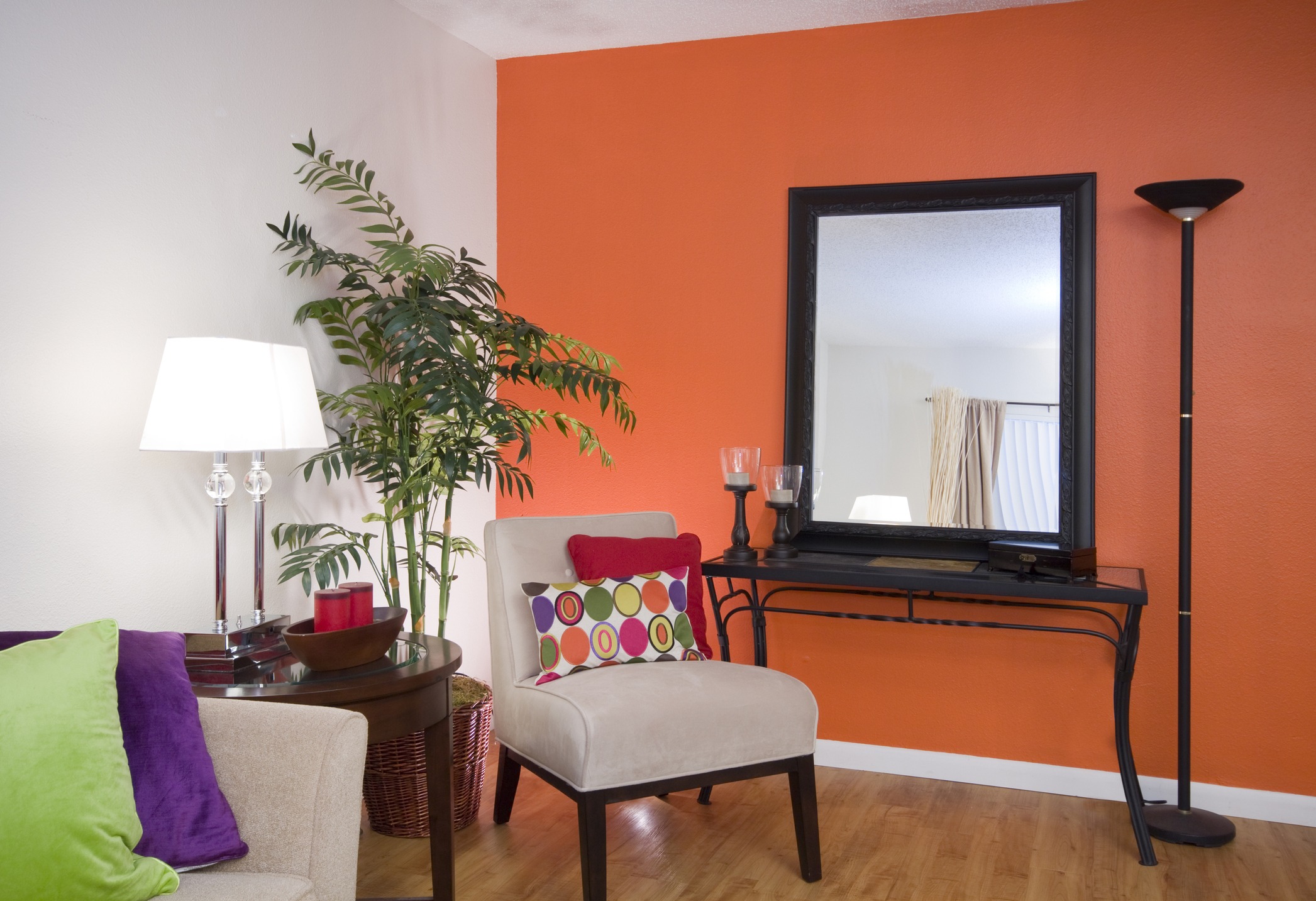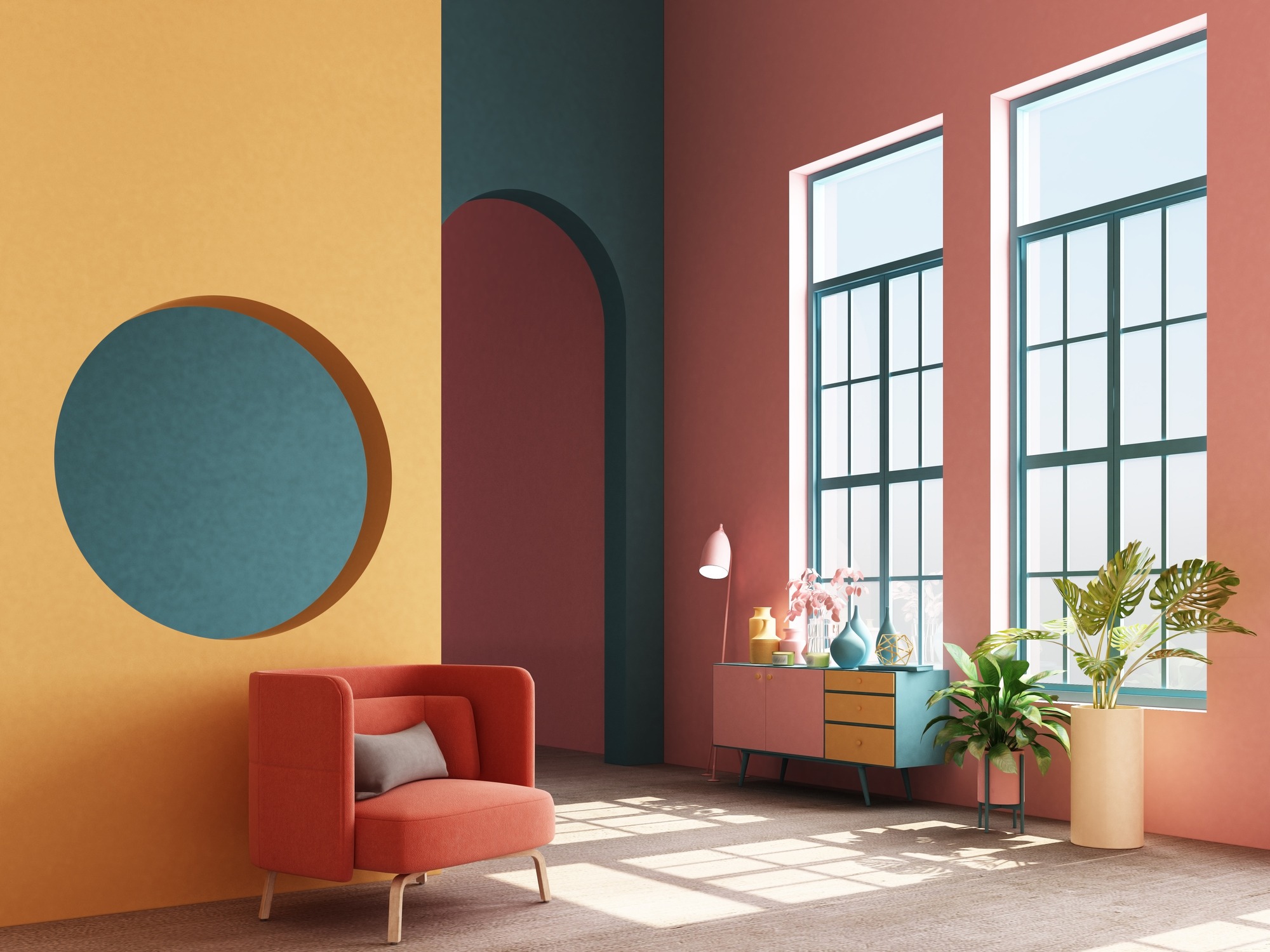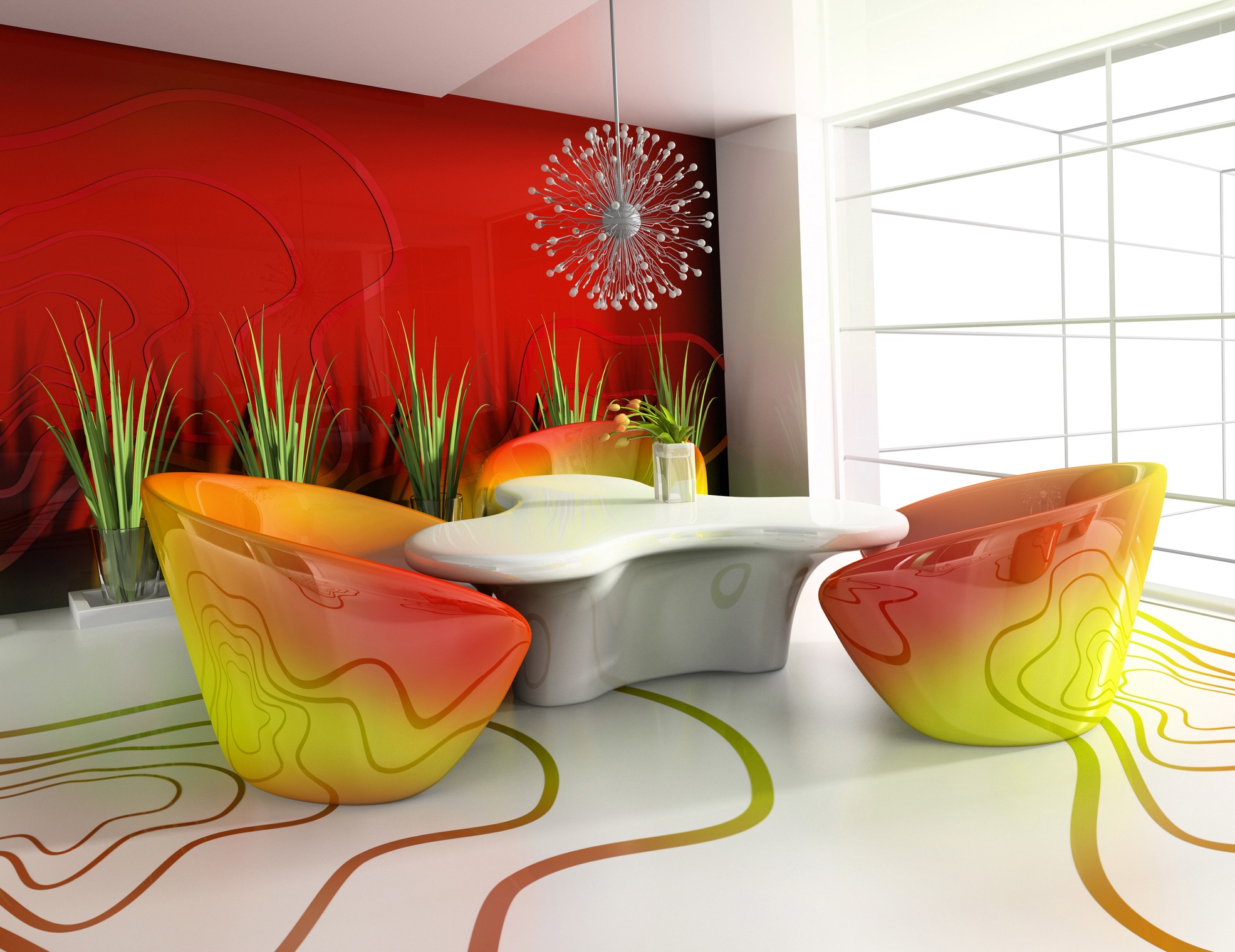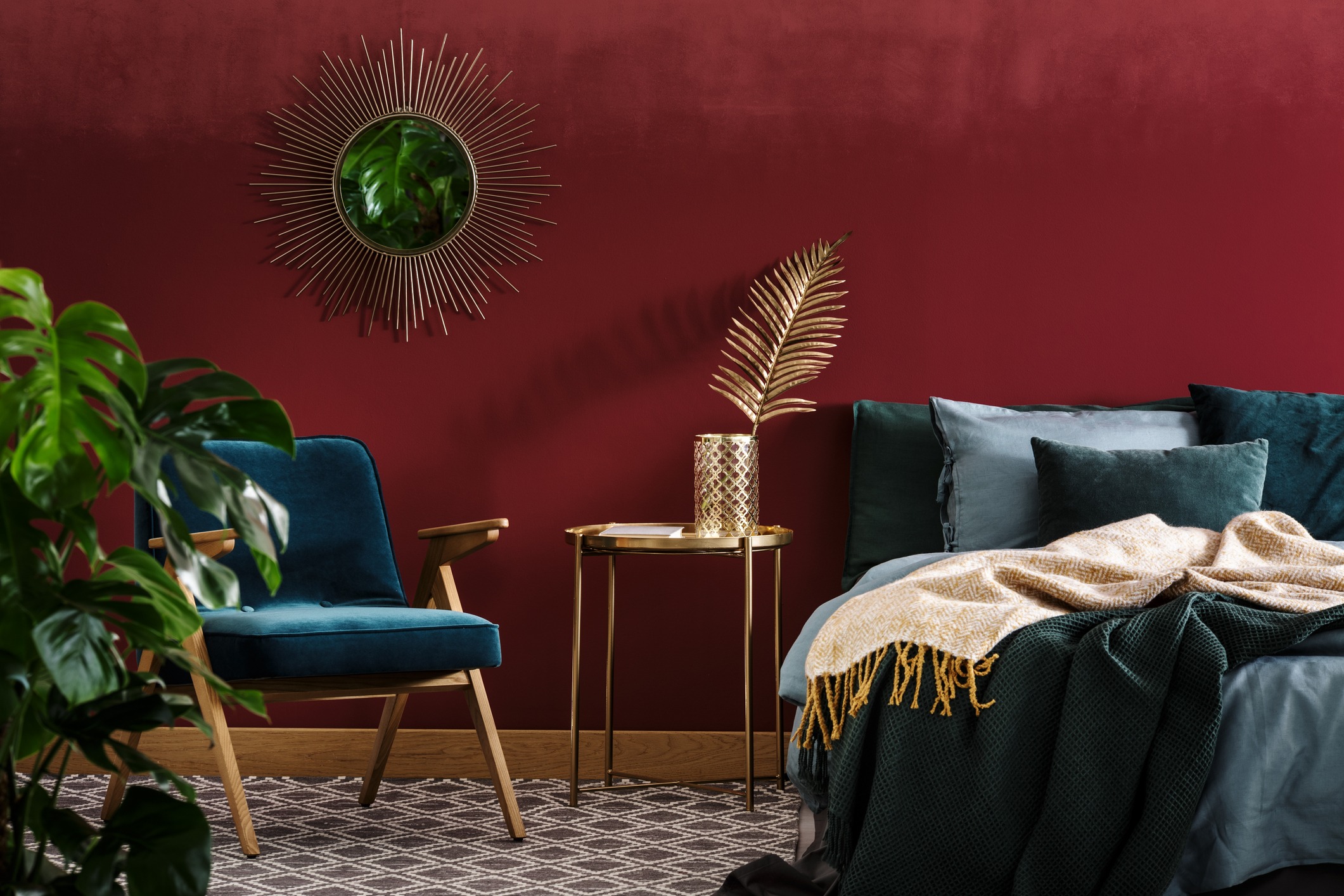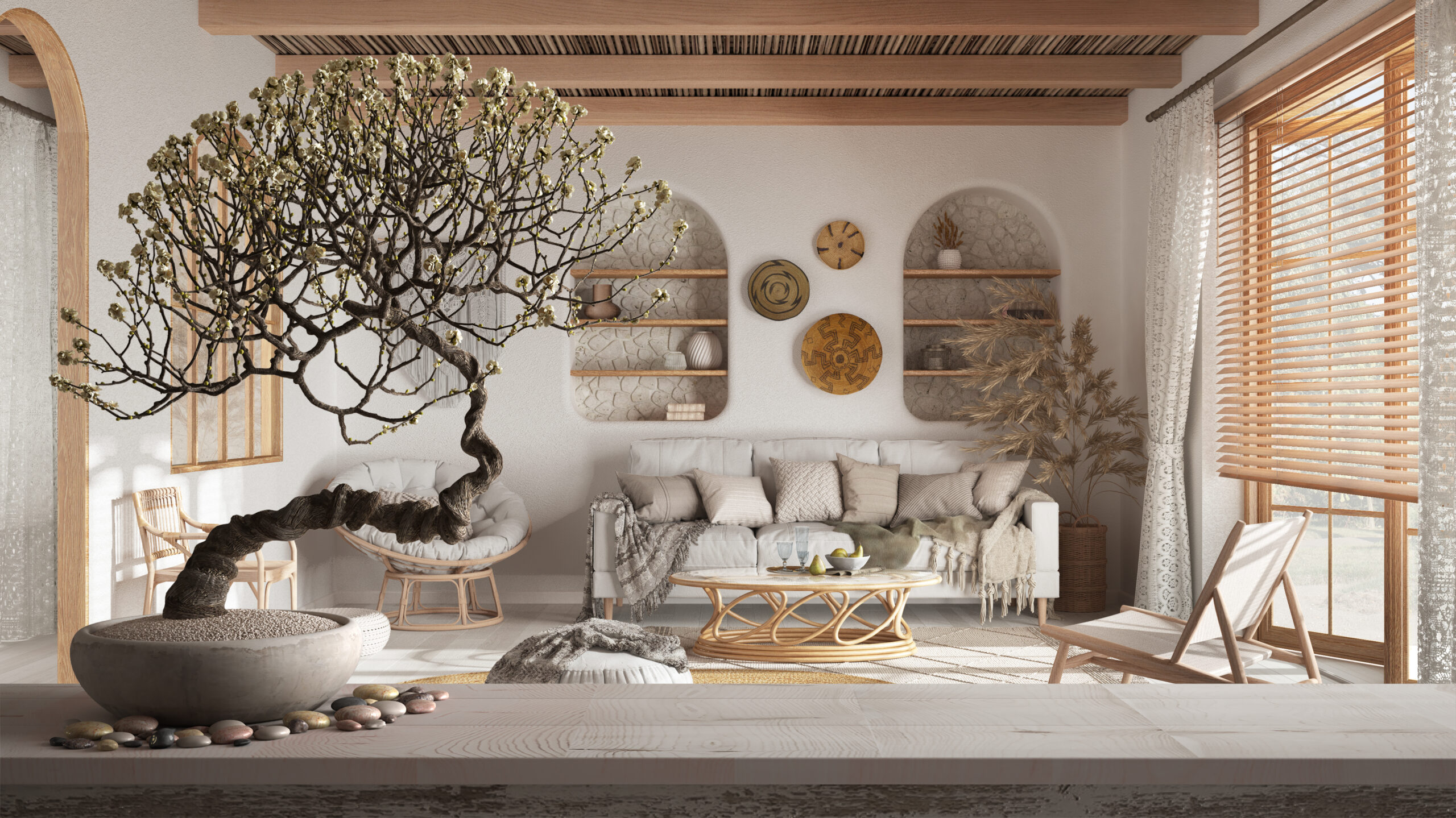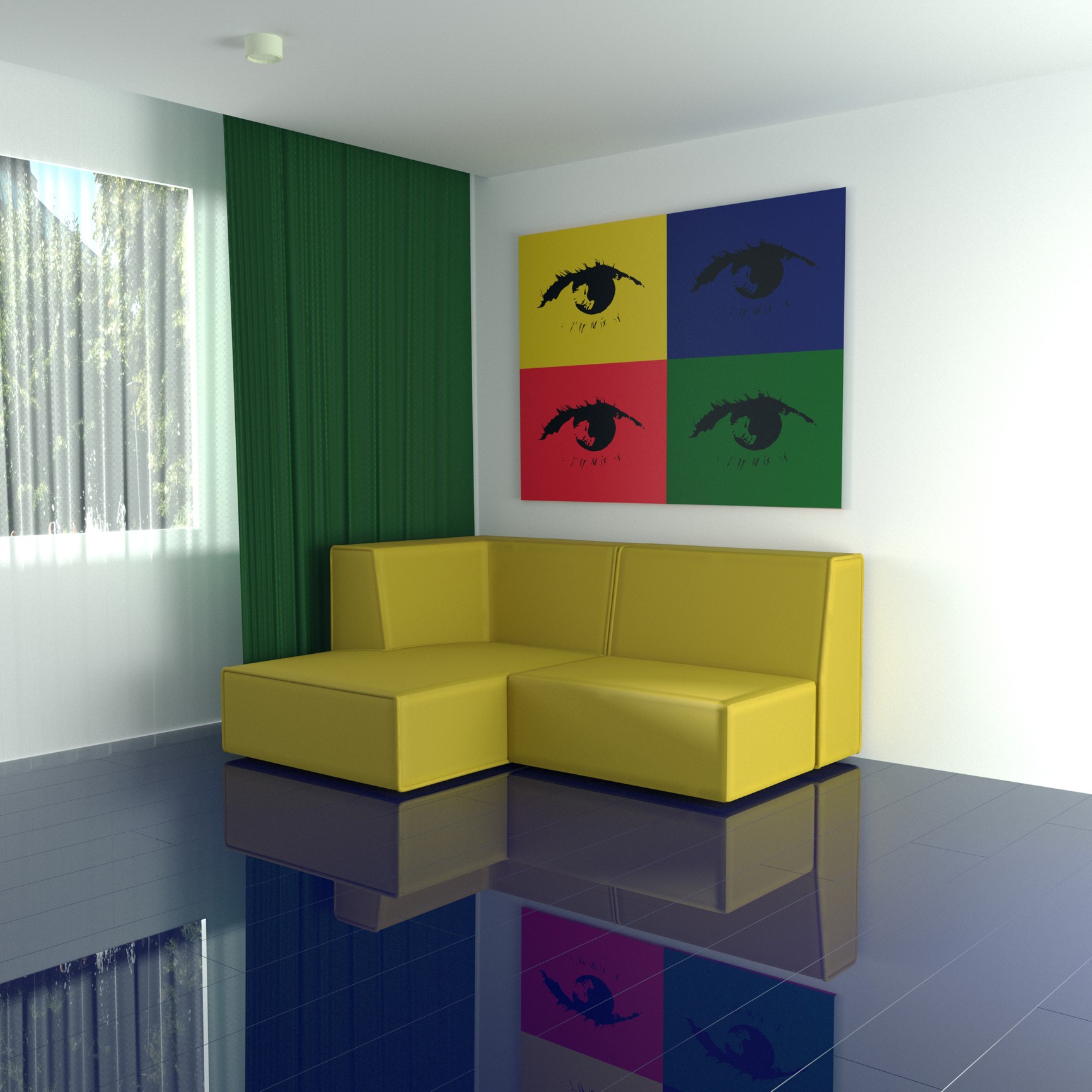Step into the vibrant and eclectic world of the 1980s, an era where interior design was as bold and dynamic as the decade itself. In this exploration of 80s design trends, we dive into a time characterized by its daring use of color, innovative materials, and a blend of cultural influences that mirrored the rapid changes in technology, music, and fashion. The 1980s weren’t just about neon leggings and big hair; they were a period of expressive freedom in design, where traditional rules were challenged, and individuality reigned supreme. From the futuristic appeal of high-tech décor to the Memphis movement’s abstract rebellion, each style element of the 80s tells a story of a decade that was unafraid to stand out and make a statement.
This journey through 1980s interior design styles is more than just a nostalgic trip down memory lane; it’s an homage to a time of aesthetic innovation and flamboyance. The era’s unique fusion of pop culture, emerging technology, and global events created a distinct language in design, one that continues to influence modern aesthetics. As we revisit the popular styles of this iconic decade, from the opulent glamour to the rustic naturalism, we uncover the essence of a time when design was not just about creating spaces but about crafting experiences and expressions of the self.
The Bold and Bright Color Palette
The Bold and Bright Color Palette of the 1980s was a definitive shift from the more subdued tones of previous decades, reflecting a period of high energy, innovation, and a sense of optimistic rebellion. This era embraced a color scheme that was unapologetically vibrant, featuring neon hues, electric shades, and a mix of colors that were almost psychedelic in their intensity. Hot pinks, bright yellows, neon greens, and electric blues became the hallmark of the 80s aesthetic, both in fashion and interior design. These colors weren’t just accents; they were often the main event, used liberally on walls, furniture, and home accessories.
This audacious color palette was influenced by several factors. The rise of MTV and the music video as a cultural phenomenon brought with it a new visual language where color played a key role in expressing personality and style. The 80s were also a time of economic boom, technological advancement, and a growing emphasis on individualism, all of which were reflected in the era’s bold design choices. The use of such vivid colors in interior design was a break from tradition, symbolizing a move towards a more futuristic and optimistic outlook.
In homes, this color palette translated into rooms that were full of life and energy. It wasn’t uncommon to see a living room with bright yellow walls, a hot pink sofa, and a neon green art piece. These colors were often paired with patterns like stripes, polka dots, and geometric prints, adding to the dynamic and playful nature of the design. This love for bold colors also extended to kitchen appliances, bathroom fixtures, and even flooring, with designers and homeowners alike choosing hues that previously might have been considered too daring for such spaces.
However, the bold and bright color palette of the 80s wasn’t just about making a loud statement. It was also about challenging the norms and embracing a sense of freedom and creativity in personal and living spaces. This period showed that color could be used not just for beautification but also as an expression of individuality and a reflection of the vibrant cultural shifts happening at the time. Today, as we revisit the 80s color trends, they remind us of the power of color in transforming spaces and influencing mood, proving that interior design is as much about personal expression as it is about aesthetics. Uncover the legacy. Delve into the dazzling world of Studio 54 and its impact on design trends.
Memphis Design Movement
The Memphis Design Movement, emerging in the early 1980s, was a revolutionary and provocative style that stood in stark contrast to the minimalist trends that preceded it. Spearheaded by Italian designer Ettore Sottsass and a group of young architects and designers, the Memphis Group sought to disrupt the status quo of the design world with their unconventional and playful approach. Named after the Bob Dylan song “Stuck Inside of Mobile with the Memphis Blues Again,” which played during their first meeting, this movement became synonymous with the 1980s design revolution.
Memphis Design is characterized by its eclectic mix of geometric shapes, bold colors, and an array of patterns. This style deliberately clashed elements that were traditionally seen as incompatible, both in terms of color and form. Furniture pieces, lighting fixtures, and other home accessories designed in the Memphis style were often asymmetrical, featuring abstract, angular, and whimsical shapes. This deliberate departure from conventional design norms was not just a visual statement but also a philosophical one, challenging the idea that objects had to adhere to traditional notions of beauty and functionality.
The movement’s use of laminate, plastic, terrazzo, and brightly colored fabrics was a refreshing change from the more sedate materials of the 1970s. The Memphis designers embraced new industrial materials and technologies, using them to create objects that were as much works of art as they were functional items. The designs often featured a mix of loud patterns such as polka dots, stripes, and bold geometric shapes, further enhancing the playful and irreverent aesthetic.
Memphis Design had a profound impact on the world of interior design, with its influence quickly spreading beyond furniture to textiles, wallpaper, ceramics, and even fashion. The movement’s embrace of kitsch and pop culture elements resonated with a generation that was looking to break free from the past and express themselves in new and unconventional ways. Memphis pieces were not just furniture; they were statements, meant to provoke and inspire.
Though the Memphis Group disbanded in 1987, the legacy of the movement endures. Its impact can still be seen in the work of contemporary designers who continue to draw inspiration from its bold use of color, pattern, and form. The Memphis Design Movement was more than a fleeting trend; it was a bold assertion of creativity and individuality in design, reflecting the exuberant spirit of the 1980s. Its influence on the design landscape serves as a reminder of the power of design to challenge the norm, spark conversation, and evoke emotion.
High-Tech and Futuristic Themes
The High-Tech and Futuristic Themes of the 1980s interior design were a reflection of the era’s fascination with technology and the space age. This period was marked by significant advancements in technology and a growing cultural interest in what the future might hold, influenced by the space race, sci-fi movies, and the burgeoning computer age. Interior design of the time captured this sense of wonder and optimism, embracing a style that was both innovative and forward-looking.
High-Tech design in the 1980s was characterized by its embrace of industrial materials and a machine aesthetic. Chrome, glass, and steel became popular materials in furniture and decor, reflecting the sleek, polished look of modern machinery and gadgets. This style often featured exposed structural elements, such as pipes and ductwork, and a color palette that leaned heavily towards metallics, blacks, and whites. Furniture and decor pieces were designed with a focus on functionality and modularity, often incorporating elements that were adjustable or multi-purpose, mirroring the era’s enthusiasm for gadgets and technological innovation.
Futuristic themes were also prevalent, inspired by visions of what the future might look like. This was evident in the popularity of geometric shapes and asymmetrical forms in furniture design, which gave rooms a dynamic and unconventional look. Lighting fixtures, in particular, took on sculptural and unusual forms, often using new lighting technologies like neon and LED. The use of mirrors and reflective surfaces was another hallmark of this style, creating a sense of space and futurism.
Incorporating technology into the home became a key element of this trend. The 1980s saw the introduction of various home technologies and entertainment systems, and interior design started to reflect this by integrating tech elements seamlessly into the living space. This ranged from built-in sound systems to the first home computers, which began to find a place in the household’s daily life.
The High-Tech and Futuristic themes of the 1980s were more than just an aesthetic choice; they represented the era’s optimism and excitement about the possibilities of the future. This style was about pushing boundaries and imagining what was possible, both in terms of design and technology. Today, as we look back at the High-Tech and Futuristic design of the 80s, we see the roots of many modern design trends and a reminder of the era’s unique blend of technology and creativity.
Excessive and Glamorous Decor
The Excessive and Glamorous Decor of the 1980s was a distinct departure from the minimalist and understated styles of previous decades, reflecting the era’s ethos of opulence, extravagance, and a desire to make bold statements. This trend was heavily influenced by the economic boom of the 1980s, which brought with it a culture of excess and a penchant for luxury. The interior design of this period mirrored the lavish lifestyles popularized by celebrities, movies, and television shows, particularly evident in the popular soap opera “Dynasty,” which epitomized the glamour and decadence of the time.
In the realm of interior design, this translated into spaces that were rich in texture, color, and ornamentation. Luxurious materials such as velvet, silk, chintz, and high-gloss lacquer were all the rage. Furniture pieces were often oversized, with plush upholstery and an abundance of decorative details like tassels, fringing, and gold or brass accents. This style wasn’t shy about mixing patterns and prints, resulting in interiors that felt opulent and visually stimulating.
Wall treatments and decor in the 1980s excessive and glamorous decor trend often included bold wallpaper patterns, sometimes with metallic or reflective elements. Mirrors were used extensively, not just for practicality but as a design feature, often with ornate frames. Artwork and accessories were chosen for their ability to make a statement, with popular choices including abstract paintings, sculptures, and a variety of glass and crystal objects.
Lighting played a crucial role in these glamorous interiors. Chandeliers, whether traditional crystal or modern and abstract, were a common sight and served as a focal point in many rooms. Table lamps and floor lamps were designed to be decorative objects in their own right, often large and made of materials like brass or smoked glass.
The excessive and glamorous decor of the 1980s was more than just a style choice; it was a reflection of the societal attitudes of the time. It spoke of success, wealth, and the desire to express individuality through one’s living environment. Today, while interior design trends have shifted towards more sustainable and minimalist approaches, the 80s glamorous decor remains a symbol of a time when more was more, and the interior design was as much about making a personal statement as it was about functionality and comfort.
Natural and Rustic Influences
In the midst of the 1980s’ penchant for bold colors, high-tech themes, and glamorous decor, there emerged a counter-movement that embraced Natural and Rustic Influences in interior design. This trend was a response to the decade’s often overwhelming opulence, offering a more grounded, tranquil, and organic aesthetic. It reflected a growing desire for a connection with nature and a simpler, more authentic living environment amidst the fast-paced and technology-driven lifestyle of the era.
Natural and rustic interior design in the 1980s focused on materials and textures derived from nature. Wood, in all its forms, was a primary element – from polished hardwood floors to rough-hewn beams and unfinished wood furniture. Stone, whether as a fireplace, wall feature, or decorative element, was also popular, adding a sense of solidity and timelessness. These materials brought a piece of the outdoors inside, creating spaces that felt warm, inviting, and enduring.
The color palette of this style was decidedly more subdued compared to other 1980s trends, drawing from a spectrum of earthy tones like browns, greens, beiges, and grays. These colors were often complemented with floral and botanical prints in fabrics and wallpapers, reinforcing the connection to nature. Handcrafted elements were highly valued, with artisanal pottery, woven textiles, and folk art being common decorative features. These items not only added visual interest and texture but also conveyed a sense of craftsmanship and authenticity.
Furniture in natural and rustic interiors tended to be substantial and comfortable, emphasizing functionality and durability. The use of antiques or vintage pieces was common, each with its own history and character, contributing to a sense of timelessness and continuity. Accessories like braided rugs, quilts, and baskets reinforced the homey and comfortable atmosphere.
The natural and rustic style of the 1980s also reflected a growing environmental consciousness. It was a move away from the synthetic and manufactured towards materials and designs that were more sustainable and eco-friendly. This shift was not just aesthetic but also philosophical, as it aligned with the growing awareness of environmental issues and the importance of sustainable living.
Today, the natural and rustic influences of the 1980s continue to resonate in interior design. This style’s emphasis on natural materials, comfortable living, and a connection with the past remains appealing in our increasingly digital and fast-paced world. It reminds us of the enduring appeal of simplicity, the beauty of nature, and the importance of creating spaces that feel like a sanctuary.
Pop Art and Cultural References
The 1980s saw a resurgence of Pop Art and the incorporation of bold cultural references in interior design, reflecting the decade’s fascination with media, advertising, and the vibrant art scene. This period, marked by the work of artists like Andy Warhol and Keith Haring, brought a playful and irreverent approach to design, where the line between art and everyday objects was often blurred. Pop Art, with its roots in the 1950s and 60s, found new expression in the 80s, mirroring the era’s exuberance, consumer culture, and the burgeoning influence of television and pop music.
In interior design, the Pop Art influence was evident in the use of bright, saturated colors and graphic patterns. Interiors often featured iconic pop culture imagery, from famous brand logos to comic book characters, in a way that was both whimsical and statement-making. This style embraced a kind of kitschy glamour, combining high art with popular culture elements in a way that was accessible and playful. Wallpaper, textiles, and art pieces often bore large-scale prints of popular icons or everyday objects, rendered in bold colors and stylized graphics.
Furniture and decor in the Pop Art style were characterized by their innovative use of materials and forms. Designers played with scale and proportion, creating oversized lamps, chairs, and other furnishings that looked like they had leaped out of a comic book or an advertisement. The use of plastics and other synthetic materials was common, contributing to the bright and glossy aesthetic of the style.
The Pop Art and cultural references of the 1980s were not just about creating a visually striking space; they also reflected deeper cultural and social dynamics. This style was a way for people to connect with the broader cultural movements of the time, expressing their identities and perspectives through their living spaces. It was a celebration of popular culture, a commentary on consumerism, and a playful challenge to traditional notions of art and design.
Incorporating cultural references into interior design also meant that homes could reflect the dynamic changes happening in music, fashion, and entertainment. Spaces could be personalized with references to one’s favorite bands, movies, or celebrities, making each home a unique reflection of its occupants’ tastes and interests.
Today, the Pop Art and cultural references of the 1980s continue to inspire designers and homeowners. This style’s bold use of color, graphic patterns, and playful approach to design have a timeless appeal, reminding us of the power of interior design to reflect and shape our cultural experiences. The 80s Pop Art trend shows us that our living spaces can be canvases for self-expression, creativity, and fun.
Other 80s Interior Design Movements
The 1980s was a decade rich in diverse interior design movements and styles. Here’s a list of some other notable 80s interior design movements:
- Postmodernism: Characterized by its rejection of the strict rules of modernism, postmodern design embraced complexity, contradiction, and eclectic mixing of styles and elements. It often featured playful and whimsical shapes, bright colors, and unusual materials.
- Art Deco Revival: Although Art Deco peaked in the 1920s and 30s, it saw a revival in the 80s. This movement included geometric patterns, sleek lines, and luxurious materials like chrome, glass, and mirrored surfaces.
- Industrial Style: Emerging in the 80s, this style emphasized exposed brick, metal fixtures, and a raw, unfinished look. It was influenced by the look of factories and industrial spaces.
- Minimalism: In contrast to the more is more approach of the decade, minimalism focused on simplicity and functionality. This style featured clean lines, monochromatic color schemes, and uncluttered spaces.
- Chintz and Country Style: This style was characterized by floral prints, ruffles, and an abundance of pastel colors. It was a cozy, homey look that often included traditional elements like wood furniture and quilted textiles.
- Southwestern Style: Influenced by Native American and Mexican designs, this style incorporated earthy color palettes, rough textures, and handcrafted items.
- Memphis-Milano Influence: Beyond the core Memphis Design Movement, the Memphis-Milano style was known for its vibrant colors, bold patterns, and eccentric designs in furniture and decor.
- Neo-Victorian and Historical Revival: This style saw a resurgence of Victorian-era design elements, including ornate furniture, heavy draperies, and detailed wallpaper patterns.
- Tropical and Exotic Themes: Influenced by travel and a fascination with distant cultures, this style included lush plants, wicker and rattan furniture, and vibrant prints.
- Hi-Tech and Futuristic: Reflecting the technological advancements of the time, this movement featured sleek, glossy surfaces and integrated technology, creating a look that was both modern and futuristic.
- Glam Rock Influence: Inspired by the glam rock music scene, this style included metallic finishes, neon lights, and rock-n-roll-themed decor.
Conclusion
In retrospect, the interior design styles of the 1980s were more than just a collection of trends; they were a bold statement about the era’s spirit and cultural ethos. These styles reflected a society in the midst of transformation, embracing both the glitz of excess and the simplicity of natural aesthetics. Today, as we see a resurgence of some of these trends, it’s clear that the 80s left an indelible mark on the world of design. The era’s influence persists, reminding us of a time when creativity knew no bounds, and personal expression was paramount in crafting one’s living space.
As we wrap up this exploration of 1980s interior design, it’s evident that the decade was a defining period in shaping modern aesthetics. The bold colors, innovative materials, and eclectic styles of the 80s continue to inspire contemporary designers and homeowners alike. Whether you lived through the era or are discovering its charm for the first time, the design legacy of the 1980s offers a fascinating lens through which to view the evolution of interior design. It challenges us to be daring in our choices and to remember that our homes, much like the 80s, can be a canvas for self-expression and bold creativity.

